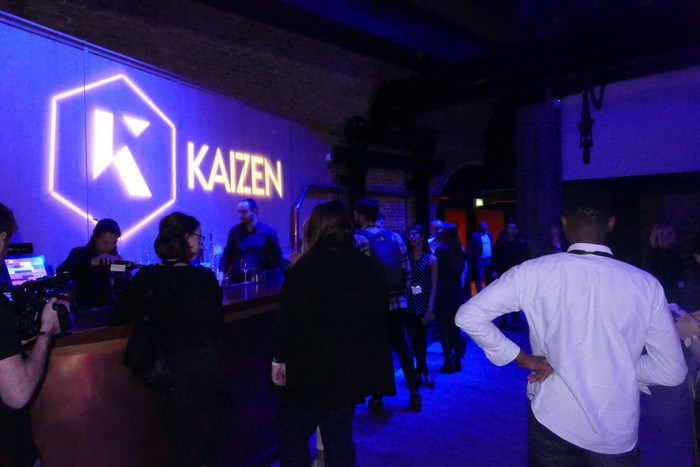Content
Why You Should be Using Live Video in Your Content Marketing

I know what you’re thinking, you’ve only just started to incorporate, or think about incorporating, video into your content marketing and now you have to worry about live video too? It may seem like just one more thing that is going to take up a lot of time and resource but live video can be hugely rewarding and fairly low effort
Live video is often easier – and far cheaper – to produce than video content. It’s true that live videos can involve all of the lights, actors, and professionalism of regular video content, but they can also just be one person with an iPhone filming themselves talking. Part of the appeal of live videos is often the spontaneous, unpolished feel of them, so different from the usual standards of corporate shine we are used to seeing from brands.
Live Lets You Converse with Customers
Live video can serve a very different purpose to regular video content. What was so great about Twitter when it was first launched, and still is to some extent today, was that it allowed regular customers to engage with huge brands on a human level you would not normally find through normal means of communication. Live video is a way to bring that feeling back.
For example, if you are launching a new product or tool, it would be easy to produce a video to explain and promote it. However, this is a very one-sided way of introducing the product to your customers. Instead, you could think about creating a live video of the launch, explaining the tool and encouraging questions on it that you may not have considered. This makes customers feel like they are gaining some sort of exclusivity in seeing these questions answered live.
A great thing about live video is that, unlike a Snapchat, it doesn’t have to disappear after viewing. Live videos can be kept after their initial release to be used as promotional tools and sit on site as Q&A content.
Live Video Makes Great Supporting Material
Building an entire campaign off the back of live video can be done, but it can often be much more effective when used as a part of a wider campaign.
Dunkin’ Donuts have used live video incredibly well: their first video saw 21,000 live viewers at the 13 minute mark, an amazing engagement rate for video content. Speaking of engagement, the actual PR event they were promoting was a Valentine’s Day competition for an engaged couple to win $10,000 by sharing their proposal story. This could have easily been shared as a post on Facebook and Twitter, or even with a short promotional video, but by going live Dunkin’ Donuts upped the immediacy of the competition and encouraged viewers to stay engaged with their brand for far longer.
We all know that events and experiential marketing make for great PR. They allow your brand and your customers to meet face-to-face and encourage both brand recognition and loyalty. But you can’t always invite every customer to an event or send them a sample of a new product.
This is where live video can come in again. Live stream your event to reach out to all those customers who could not be there, or set up a live video of your team setting up the samples to be sent out. However, you do not want to be seen as showing your customers what they are missing out on! Instead, think of these live videos as behind the scenes exclusivity. Show them backstage parts of the event that the people there may not see, answer their questions about the samples as you are packing them. This way you include a much wider customer base than your event would have, without highlighting their isolation from the event.
It Takes Effort to Look Effortless
A final point on live video is how to get started with it. As mentioned, live video can be far more casual and less polished than traditional video content. However, this does not mean that you should just open your selfie camera and start streaming from your head office!
Here are 3 tips for launching a successful live video;
- Don’t be scripted, be prepared – It’s nearly impossible to be scripted in a live video if you want to do it well as half of the benefit comes from engaging live with viewers. However, you do not want to go in completely unprepared. Start off with a scripted introduction, then have some key points noted down for the rest of the video, and always have something prepared to say incase the comments go quiet!
- Don’t set times, set sections – If you think that you are going to spend 2 minutes on an introduction, then 5 on questions etc you will a) be clock-watching and therefore not engaging, and b) see that your plan falls apart very quickly! Instead have a set series of sections, for example, an intro, a product demo, a guest speaker, audience questions, a competition for viewers. This allows you to be confident that you know what is coming next with the flexibility that some sections may be longer or shorter than others. A reference guide like this also allows you to tease upcoming sections to keep your viewers watching!
- Don’t do it all alone, have help – As was mentioned before, you can set up a live video with as little as a front-facing phone camera. However, countless live streams have been aired with one person talking, filming, reading and answering viewer questions. This can work ok for a celebrity addressing fans, but for a brand to keep the energy levels up throughout the broadcast you should really have one person leading the content, someone else filming and at least one more person going through user questions and engagement statistics, picking out the best ones and letting you know to change the pace if engagement drops.
Live video is easier to set up and cheaper to produce than traditional video content, so give it a go the next time you are looking for a way to boost your brand and engage with your customers.
Share











